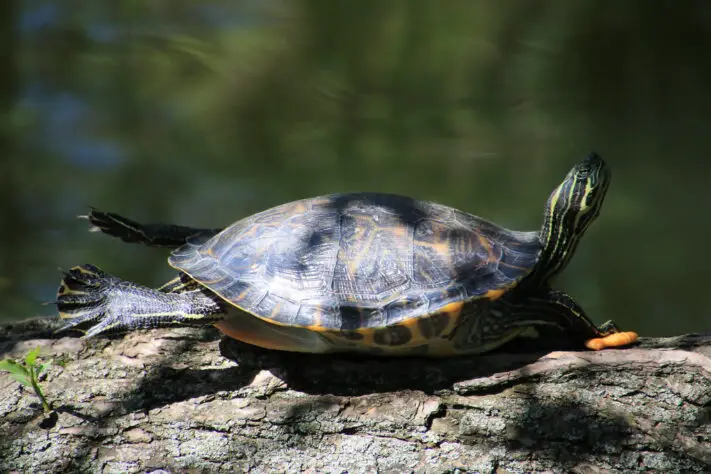What is a Yellow Belly Cooter Turtle?
Yellow Belly Cooter is a nickname used to describe either a Yellowbellied Slider or a Red Bellied Cooter. These two types of turtles are very similar, and they actually used to be considered the same species until around 50 years ago. Both of these turtle have yellow lines across their skin.
Difference between Cooter and Slider turtles?
While Yellowbellied sliders and Red Bellied Cooters do look very similar, they do have distinct characteristics. Here are the main differences between Cooters and Sliders:
- A cooter has yellow horizontal lines across the side of their head. The slider usually just has one yellow line that runs vertically up the side of their head behind their eye. As the name suggests, a Red Bellied Cooter tends to have a red shell.
- Cooters tend to grow a little bigger than slider turtles. Additionally, the shell of a cooter usually has more of a dome shape compared to a slider.
- While it depends on the environment and living conditions, cooters are usually less aggressive compared to sliders.
Yellowbellied Sliders and Red Bellied Cooters are so similar genetically that they can actually breed together and produce offspring.
Yellow Belly Cooter Habitat Recommendations
If you have a Yellow Belly Cooter, there are a couple basic habitat guidelines you should keep in mind. For starters, I would recommend getting a glass or plastic turtle tub tank that is at least 75 gallons. Yellow Belly Cooters can grow up to 12 inches, so it is very important that they have enough space to live comfortably.
Yellow Belly Cooters spend a lot of time both on land and in the water. Therefore, I would recommend providing enough land for your turtle to walk around, and enough water for them to swim. In the wild, Yellow Belly Cooters are found in a variety of habitats including small rivers, swamps, marshed, ponds, and wetlands.
As an aquatic turtle, it is absolutely essential that you have a basking area in your tank. You should make sure the basking area is big enough for the turtle to lay comfortably, and it should also be within close distance of the UV lamp.
Temperature is another important element to play close attention to. In general, the water of your tank should be somewhere between 75 and 80 degrees fahrenheight. The air temperature should be somewhere between 75 and 85 degrees fahrenheight. If your tank is too cold, you should look into buying either a water heater or a heat lamp.
What to feed a Yellow Belly Cooter?
Yellow Belly Cooters are omnivores, which means they get their food from both plant and animals sources. I would recommend feeding them some sort of combination of turtle pellets and leafy vegetables. You can also spice things up by adding live insects which are a great sources of protein.

